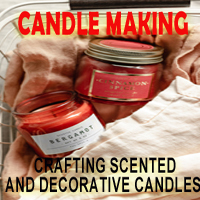


From Vine To Glass
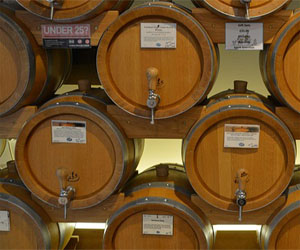
Wine production is a finely tuned, centuries-old craft that combines elements of agriculture, science, and artistry to transform grapes into the complex and delightful beverage that has been cherished for millennia. This process, from the vineyard to the glass, is a rich tapestry of traditions, innovation, and meticulous techniques that make every bottle of wine a work of art.
Grape Cultivation: The journey of wine production begins in the vineyard, where grapes are carefully cultivated. Grape varieties are selected based on the region's climate, soil, and tradition, as these factors significantly influence the character of the wine. Modern vineyards often employ advanced techniques, such as precision viticulture and sustainable farming practices, to ensure the health and quality of the grapevines.
Harvesting: The timing of the grape harvest is a critical decision. Harvesting too early or too late can significantly impact the final product. In traditional wine production, grapes were often handpicked, allowing for the careful selection of ripe, healthy clusters. However, modern mechanical harvesters have also become popular for their efficiency.
Crushing And Pressing: Once the grapes are harvested, they undergo a process known as crushing, where they are gently broken to release the juice. Depending on the type of wine being produced, the grapes may be destemmed, meaning the stems are removed, or they may be pressed directly. The juice obtained from this process is known as "must."
Fermentation: Fermentation is a crucial stage in wine production, as it's where the grape juice transforms into wine. Yeasts are introduced to the must to convert the sugars into alcohol. The choice of yeast and fermentation method can significantly influence the wine's flavor profile.
Aging: Aging is a key factor in wine production, especially for red wines and some white wines. Oak barrels, often used for aging, can impart flavors and aromas to the wine, adding complexity and depth. The length of aging, as well as the type of barrel used, varies based on the style of wine desired.
Blending: In many cases, wine producers blend different grape varieties or vintages to achieve the desired flavor profile. Blending is an art that relies on the winemaker's expertise and palate. It's a way to balance the wine's characteristics and create a harmonious final product.
Bottling: After the wine has matured, it is ready for bottling. The wine is carefully filtered and often treated to ensure its stability. It is then bottled, sealed, and labeled. The label often contains crucial information about the wine, such as its vintage, grape variety, and origin.
Quality Control: Throughout the entire wine production process, quality control measures are in place to ensure that the wine meets the winery's standards. This includes regular tasting and testing to monitor the wine's progress and to address any issues that may arise.
The Art And Science Of Winemaking: Wine production is a unique combination of tradition and science, an artful craft that continually evolves with advancements in viticulture and enology. It is a marriage of ancient practices and modern techniques, resulting in a wide array of wine styles and flavors that can cater to every palate.
Wine production is a captivating journey that extends from the vineyard to the wine glass, encompassing the delicate balance between nature and human craftsmanship. It is a process that involves the preservation of tradition, the exploration of innovation, and an unwavering commitment to quality. Wine enthusiasts can appreciate the meticulous artistry that goes into each bottle, making every sip a testament to the timeless legacy of this beloved beverage.
Nurturing Your Skin And The Planet
 Biodegradable Packaging: Green skincare products are packaged in eco-friendly containers that are either biodegradable or recyclable. These efforts aim to reduce the vast amounts of plastic waste that end up in our oceans and landfills.
Biodegradable Packaging: Green skincare products are packaged in eco-friendly containers that are either biodegradable or recyclable. These efforts aim to reduce the vast amounts of plastic waste that end up in our oceans and landfills.
Transparency: Green skincare brands tend to be more transparent about their ingredients, sourcing, and production methods. This transparency empowers consumers to make informed choices about the products they use.
Toxin-Free Formulas: Many mainstream skincare products contain potentially harmful chemicals, such as parabens, phthalates, and sulfates. Green skincare, on the other hand, avoids these toxins and focuses on safer, more natural alternatives.
Holistic Approach: Green skincare often takes a holistic approach to beauty. It emphasizes that what goes on your skin can affect your overall well-being. It encourages mindfulness about the products you choose and their potential long-term effects.
Gentle On Sensitive Skin: Green skincare is typically gentle on sensitive skin. Natural ingredients and fewer harsh chemicals reduce the likelihood of skin irritations, allergies, and breakouts.
Efficacy And Results: Many people believe that natural products are less effective than their chemical-laden counterparts. However, green skincare proves otherwise, with numerous natural ingredients known for their therapeutic and rejuvenating effects.
Supporting Ethical Practices: Green skincare often supports ethical practices, such as fair trade and sustainable farming. By buying these products, consumers contribute to a more equitable global economy.






The Art Of Creative Upcycling
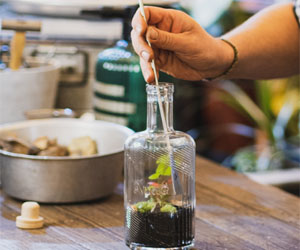 Inspiration And Community
Inspiration And Community
Trash to treasure often inspires others to embrace their creativity and sustainability. There are numerous online communities, social media groups, and DIY websites dedicated to upcycling. These platforms provide opportunities to share your projects, gain insights, and connect with like-minded individuals who share a passion for creative reuse.
Getting Started With Upcycling
Start Small: If you're new to upcycling, begin with small, manageable projects. Repurposing an old picture frame or transforming a piece of clothing can be a great starting point.
Gather Supplies: Depending on your chosen project, collect the necessary supplies, which may include tools, paint, glue, or other materials.
Seek Inspiration: Look for inspiration in books, magazines, online platforms, and by observing the work of other upcyclers.
Learn Techniques: Familiarize yourself with upcycling techniques and methods. Learning how to properly clean, repair, or transform items is essential for successful projects.
Take Safety Precautions: Depending on your project, be aware of safety precautions. When working with tools, chemicals, or heavy materials, safety should be a top priority.
The art of turning trash into treasure is not only a sustainable and environmentally responsible practice but also a creative and economical endeavor. Whether you're a seasoned upcycler or new to the world of creative reuse, there are always opportunities to transform discarded items into valuable and beautiful treasures. As you embark on your upcycling journey, you'll discover the joy of creating something unique, contributing to a greener planet, and embracing a more resourceful and imaginative way of life.
From Earth To Artistry
 The History Of Clay Sculptures: The origins of clay sculptures can be traced back to prehistoric times when early humans fashioned clay into small figurines and objects. These early creations were often utilitarian, serving as fertility symbols or talismans. As civilizations advanced, clay sculptures gained more prominence, taking on religious, decorative, and artistic significance.
The History Of Clay Sculptures: The origins of clay sculptures can be traced back to prehistoric times when early humans fashioned clay into small figurines and objects. These early creations were often utilitarian, serving as fertility symbols or talismans. As civilizations advanced, clay sculptures gained more prominence, taking on religious, decorative, and artistic significance.
In ancient Greece, for example, clay was employed to create intricate figurines, pottery, and votive offerings. The renowned terracotta warriors of China's Qin Dynasty, dating back over 2,000 years, are an exceptional example of the artistry and craftsmanship that can be achieved through clay sculpture. These life-sized, meticulously detailed soldiers were created to accompany the first Emperor of China in his afterlife, attesting to the importance of clay sculptures in historical contexts.
The Techniques Of Clay Sculpting: Clay sculpting encompasses various techniques, with artists employing handbuilding, coiling, slab-building, and wheel-throwing methods. Handbuilding involves directly manipulating the clay by pinching, coiling, and smoothing to create the desired shape. Coiling uses rolled clay ropes to build forms, while slab-building cuts flat pieces of clay to construct sculptures. The potter's wheel is yet another approach, allowing for precision and symmetry in shaping clay.
The Firing Process: One of the defining aspects of clay sculptures is the firing process. After the artist shapes the piece, it is left to dry, followed by firing in a kiln. Kiln temperatures can vary, resulting in different finishes and properties of the sculpture. Low-temperature firing may create porous, unglazed pieces, while high-temperature firing can produce sturdy, vitrified sculptures. The application of glazes before the final firing stage adds color, texture, and depth to the artwork.
Crafting The Foundations Of A Creative Journey
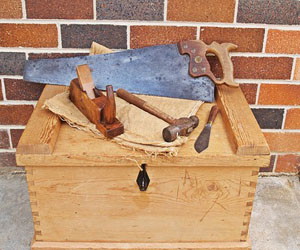 Safety First: Safety is paramount in woodworking. As a beginner, familiarize yourself with the proper use of safety gear, such as safety glasses, ear protection, and dust masks. You should also learn how to use tools safely, including saws, chisels, and drills, to avoid accidents and injuries.
Safety First: Safety is paramount in woodworking. As a beginner, familiarize yourself with the proper use of safety gear, such as safety glasses, ear protection, and dust masks. You should also learn how to use tools safely, including saws, chisels, and drills, to avoid accidents and injuries.
Tools Of The Trade: Every woodworker, regardless of their skill level, relies on a set of essential tools. As a beginner, you'll want to start with the basics, which may include a saw, chisels, a mallet, a tape measure, a square, and clamps. Over time, you can gradually expand your tool collection as your skills progress.
Selecting Your Wood: Choosing the right type of wood is a critical step in any woodworking project. Beginners often opt for softwoods like pine or cedar because they are easier to work with and more forgiving to mistakes. As you gain experience, you can explore the use of hardwoods like oak, maple, and cherry.
Herbs For Homemade Remedies
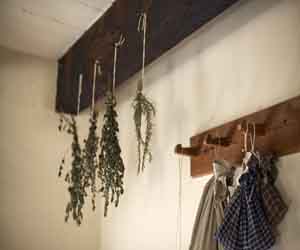 Creating Your Herbal Toolkit
Creating Your Herbal Toolkit
To get started with herbs for homemade remedies, it's essential to build a basic herbal toolkit. Here are some key herbs to consider:
1. Lavender: Known for its soothing properties, lavender can help alleviate stress, anxiety, and insomnia. It's often used in teas, essential oils, and as a topical treatment for burns and insect bites.
2. Echinacea: Echinacea is celebrated for its immune-boosting capabilities. It's commonly used to fend off or reduce the duration of colds and flu.
3. Aloe Vera: Aloe vera is renowned for its ability to heal skin ailments, from sunburn to minor cuts and wounds. Its gel is a go-to remedy for soothing and repairing damaged skin.
4. Chamomile: Chamomile is a gentle herb used to calm digestive issues and promote relaxation. It's often found in teas, but its essential oil can be used topically for various skin conditions.
5. Peppermint: Peppermint is a versatile herb known for aiding digestion and alleviating headaches. It can be used in teas, infused oils, or as a topical rub.
6. Calendula: Calendula is prized for its skin-healing properties and is a primary ingredient in salves, creams, and ointments for skin irritations and rashes.
7. Ginger: Ginger is a potent anti-nausea and anti-inflammatory herb. It's an excellent addition to teas or can be consumed in various forms for digestive relief.
8. Thyme: Thyme's antimicrobial and antibacterial properties make it a great remedy for respiratory issues. It's often used in homemade cough syrups and teas.
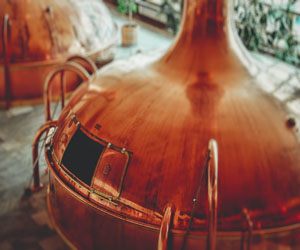 The Mashing Process: Mashing is the first key step in brewing. It involves soaking the crushed malt in hot water to extract sugars and create a sugary liquid known as wort. The temperature and duration of mashing impact the flavor, body, and sweetness of the beer. Different mashing techniques, such as single infusion or step mashing, allow brewers to tailor the wort to their desired specifications.
The Mashing Process: Mashing is the first key step in brewing. It involves soaking the crushed malt in hot water to extract sugars and create a sugary liquid known as wort. The temperature and duration of mashing impact the flavor, body, and sweetness of the beer. Different mashing techniques, such as single infusion or step mashing, allow brewers to tailor the wort to their desired specifications.
Boiling And Hop Addition: The next step is boiling the wort and adding hops. Boiling sterilizes the wort and extracts essential oils and bitterness from the hops. The timing and types of hops used in this phase greatly influence the beer's aroma and bitterness. Brewers carefully calculate when to add hops to achieve the desired flavor profile.
Fermentation: Fermentation is where the magic happens. Yeast is introduced to the wort, and it consumes the sugars, producing alcohol and carbon dioxide. Fermentation temperatures, yeast strains, and fermentation time are all critical factors that influence the beer's taste and aroma. For example, ale yeast works at warmer temperatures, producing fruity esters, while lager yeast operates at cooler temperatures, yielding a clean and crisp taste.
Conditioning: After fermentation, beer typically undergoes a conditioning phase. This can occur in the fermenter or in bottles or kegs. Conditioning allows the flavors to mature, any off-flavors to mellow, and for carbonation to develop. The length of conditioning can vary greatly depending on the beer style, with some beers requiring weeks or even years of aging.
Packaging: Once conditioning is complete, the beer is ready for packaging. Brewers have various choices, including bottles, cans, or kegs, each of which has an impact on the beer's final presentation. Proper packaging and sealing are crucial to maintain the beer's quality and shelf life.